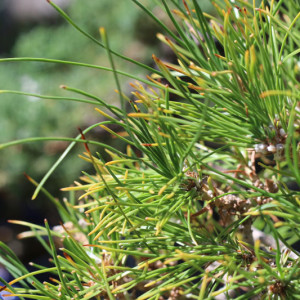
In Japan, only the most senior level apprentice or student is permitted to water the trees. The reason for this is because watering the trees requires experience and knowledge of each species of tree. Apprentices not only make sure that the trees are well watered but they also use this time to check for pests or other issues. They do so by looking at the overall tree. Experienced students can immediately tell if a tree is unhealthy by looking for signs of stress. Signs of stress include foliage discoloration or visible pests.
For Junipers, youll want to look for needles discoloration at the tips of the foliage. Yellowing needles on the inside are normal as that growth is extremely old and does not get as much sunlight. However, yellowing tips or grey dull looking needles are an indication of pests such as spider mites. For Black Pines, check the color of needles, if they are yellowing randomly or near the middle of the needle, you may have a root issue that may require repotting. Slight browing at the tips indicates a lack of water only.
The time that you spend watering your tree is a great time to check the overall health of your tree. If you see some things that dont look normal for your tree, you can immediately address it either by spraying the insects or possibly repotting if it is a root issue.
For Junipers, youll want to look for needles discoloration at the tips of the foliage. Yellowing needles on the inside are normal as that growth is extremely old and does not get as much sunlight. However, yellowing tips or grey dull looking needles are an indication of pests such as spider mites. For Black Pines, check the color of needles, if they are yellowing randomly or near the middle of the needle, you may have a root issue that may require repotting. Slight browing at the tips indicates a lack of water only.
The time that you spend watering your tree is a great time to check the overall health of your tree. If you see some things that dont look normal for your tree, you can immediately address it either by spraying the insects or possibly repotting if it is a root issue.
